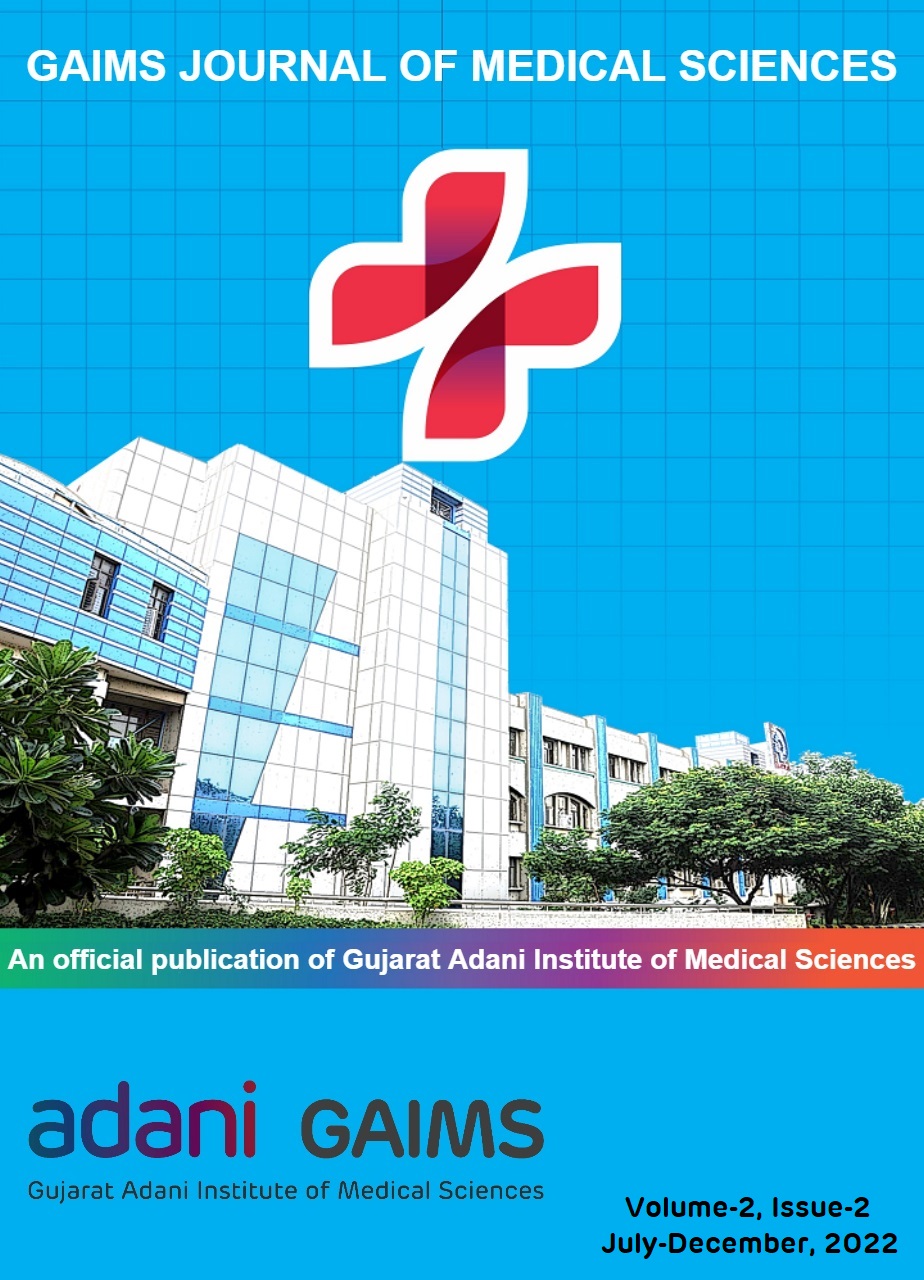Spectrum of Bacterial Pathogen and its Antimicrobial Resistance Pattern in Urinary Tract Infection in Western Gujarat
Keywords:
UTI- Urinary tract infection, Semi quantitative culture for UTI, Spectrum of pathogen in UTI, Antibiogram of pathogens isolated from UTIAbstract
Background
Urinary Tract Infection (UTI) is the most common bacterial infection in human and is one of the most frequently occurring hospital acquired infections. UTIs refer to the presence of microbial pathogens within the urinary tract and it is usually classified by the site of infection as bladder (cystitis), kidney (pyelonephritis) or urine (bacteriuria). Aim of this study was to determine the spectrum of bacteriological pathogens responsible for UTI and to assess the antibiotic resistance pattern of the causative uropathogens.
Material & Methods
A cross sectional study was performed on 393 urine samples from July 2021 to July 2022 to investigate symptomatic patients of UTI among patients attending Gujarat Adani Institute of Medical Sciences medical college (GAIMS), Bhuj-Kutch, Gujarat, India. All urine samples were processed by standard semi-quantitative culture method and sensitivity by Kirby Bauer disk diffusion method. Results of sensitivity testing were interpreted as per CLSI guidelines.
Results
Out of 118 positive culture samples, Escherichia coli is the most prevalent organism with 47.45%, followed by Klebsiella pneumoniae (18.64%), Enterococcus spp.(15.25%), Pseudomonas aeruginosa (5.08%), Staphylococcus aureus (3.38%), Proteus mirabilis (5.08%), Acinetobacter spp.(5.08%). Study shows higher resistance towards beta lactam group of drugs however less resistant to aminoglycoside group of drugs.
Conclusion
Most common organism in this study was E.coli. Current study we observed a generalized drug resistance to commonly used antibiotics. To prevent further drug resistance, strict implementation of antibiotic policy, awareness regarding judicial use of antimicrobial in medical, para medical and general population is a need of the time.








